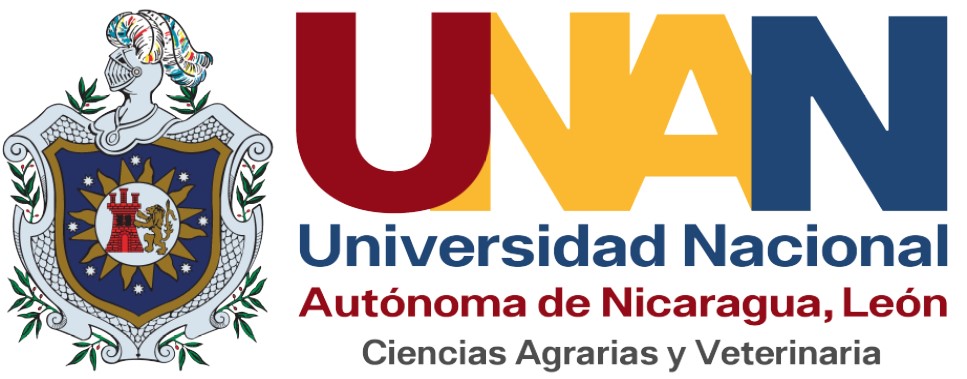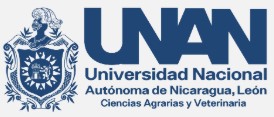Handling of nitrogen in the sugar zone center of Veracruz, México
DOI:
https://doi.org/10.5377/ribcc.v2i1.5677Keywords:
Nitrogen, Aquifer contamination, Sugar cane agroecosystemAbstract
The excessive use of nitrogen in sugarcane (Saccharum officinarum L) is a source of contamination of aquifers. The objective of this study was to evaluate the yield, profitability and leaching losses of nitrogen (N) in sugarcane plantations when the total nitrogen applied is fractionized in several applications. The study was carried out at the “Módulo de Riego I-1 La Antigua”, Veracruz, Mexico. Nine treatments were evaluated, that resulted from the factors: amount of nitrogen applied (250, 200 y 150 kg ha-1) and fractioning of nitrogen applied (2, 3 and 4 applications). The response variables were yield, cost-benefit ratio and nitrogen leaching. It was found that only the nitrogen fractioning showed significant differences for 3 and 4 applications, which resulted in higher yield than 125 t ha-1. The best cost-benefit ratio was found with a dose of 150 kg ha-1 of N fractionized in 3 applications. The lowest nitrogen leaching losses were recorded for 150 kg ha -1 of N fractionized in 3 and 4 applications. Therefore, this nitrogen fertilizer management may result in a higher nitrogen absorption by the crop and less nitrogen will be leached in to the aquifer.
Downloads
Metrics
References
Bergström, L; Johansson, R. (1991). Leaching of nitrate from Monolith Lysimeters of Different Types of Agricultural Soils. Journal of Enviromental Quality. 20: 801-807.
https://doi.org/10.2134/jeq1991.00472425002000040015x
Castro-Luna, I., Gavi-Reyes, F., Peña-Cabriales, J. J., Núñez-Escobar, R., & Etchevers-Barra, J. D. (2006). Eficiencia de recuperación de N y K de tres fertilizantes de lenta liberación. Terra Latinoamericana, 24(2), 277-282.
Chávez, M. (1999). Nutrición y fertilización de la caña de azúcar en Costa Rica. Conferencia 78. Dirección de Investigación y Extensión de la Caña de Azúcar (LAICA-DIECA), San José, 43
Demattê, J. A. M., Silva, M. L. D. S., Rocha, G. C., Carvalho, L. A. D., Formaggio, A. R., & Firme, L. P. (2005). Variações espectrais em solos submetidos à aplicação de torta de filtro. Revista Brasileira de Ciência do Solo, 29(3), 317-326.
https://doi.org/10.1590/S0100-06832005000300001
FAO. (1997). http://www.fao.org/docrep/W2598S/w2598s00.htm#Contents
Hurtado, M. G., Díaz, M. I. H., Martell, D. D., Briones, J. R., Acosta, C. R., Cuesta, E., & Sardiña, C. (2007). Síntesis y comportamiento de un material polimérico aplicado como recubrimiento en un fertilizante de liberación controlada. Revista Iberoamericana de Polímeros, 8(4), 275-286.
Gowda, J. V., Jayanthi, R., & Raju, B. (1988). Studies on the effects of nitrogen and phosphorus on flowering in gladiolus. Current Research University of Agricultural Science, 17(16), 80-81.
Hernández Melchor, G. I., Salgado García, S., Palma López, D. J., Lagunes Espinoza, L. D. C., Castelán Estrada, M., & Ruiz Rosado, O. (2008). Vinaza y composta de cachaza como fuente de nutrientes en caña de azúcar en un gleysol mólico de Chiapas, México. Interciencia, 33(11), 855-860.
Landeros-Sánchez, C., Castañeda, C. M., Lango, R. F., Moreno-Seceña, J. C., & Palomarez, G. M. (2007). Contaminación del agua por nitrógeno causada por la agricultura en zonas cañeras de Veracruz, México. In Memoria del IX Simposio Internacional y IV Congreso Nacional de Agricultura Sostenible Veracruz. Boca del Río, Veracruz, México. Noviembre (pp. 19-26).
Moreno-Seceña J; Landeros S. C; Pérez V, A; López-Collado J; Palacios Vélez O; Mª Del RefugioCastañeda. (2007). Uso y manejo de fertilizantes en caña de azúcar en la zona de abasto de losingenios La Gloria y El Modelo. Memoria del IX Simposio Internacional y IV CongresoNacional de Agricultura Sostenible Veracruz. Boca del Río, Veracruz. Noviembre. 372p.
Pacheco, A. J. (1992). Nitratos en agua subterránea. Ciencia y desarrollo 17 (102), 98-104.
Pretty, J. N., & Conway, G. R. (1988). blue-baby syndrome and nitrogen fertilisers: a high risk in the tropics. Gatekeeper series-SA.
Segura, M. L., Cortés, E. M., & Sánchez, E. M. C. (2000). Fertilización y riego bajo invernadero en producción integrada. Horticultura: Revista de industria, distribución y socioeconomía hortícola: frutas, hortalizas, flores, plantas, árboles ornamentales y viveros, (146), 16-24.
Smith, C. J., Dunin, F. X., Poss, R., & Angus, J. F. (2000). Nitrogen budget of wheat growing on a Riverine clay soil. Australian Journal of Agricultural Research, 51(7), 867-876.
https://doi.org/10.1071/AR99138
Toledo, Y., Hernández, A., Alvarez, M., Martín, G. M., & Márquez, R. (2002). Determinación del efecto antagónico de un biopreparado a partir de una cepa de Burkholderia cepacia ante Fusarium sp en el cultivo del gladiolo (Gladiolus sp). Cultivos tropicales, 23(4), 11-15.
Weterings, K., & Russell, S. D. (2004). Experimental analysis of the fertilization process. The Plant Cell, 16(suppl_1), S107-S118.
https://doi.org/10.1105/tpc.016873
Weier, K. L., McEwan, C. W., Vallis, I., Catchpoole, V. R., & Myers, R. J. (1996). Potential for biological denitrification of fertilizer nitrogen in sugarcane soils. Australian Journal of Agricultural Research, 47(1), 67-79.
https://doi.org/10.1071/AR9960067
Wilcox, T. (1991). A fertilizer selection strategy may reduce production costs. Bureau Sugarcane Experimental Station. Australia. Bulletin, (35), 7-8.
Yepis Vargas, O; Fundora Herrera, O; Pereira Marín, C; Crespo Borges, T. (1999). La contaminaciónambiental por el uso excesivo de fertilizantes nitrogenados en el cultivo de tomate. Scientia Gerundensis. 24: 5-12.
Downloads
Published
How to Cite
License
Copyright (c) 2018 Revista Iberoamericana de Bioeconomía y Cambio Climático

This work is licensed under a Creative Commons Attribution-NonCommercial-ShareAlike 4.0 International License.
Copyright © 2025 Rev. iberoam. bioecon. climate change. National Autonomous University of Nicaragua León (UNAN-León), Knowledge Area of Agrarian and Veterinary Sciences / Specific Area of Agroecology and Agribusiness / Center for Research in Agrarian Sciencies. Academic Directorate. Research Department. Publication and scientific events Unit.












 EDITORIAL
EDITORIAL e-ISSN
e-ISSN


 COPYRIGHT
COPYRIGHT This work is licensed under a Licencia Internacional
This work is licensed under a Licencia Internacional 












